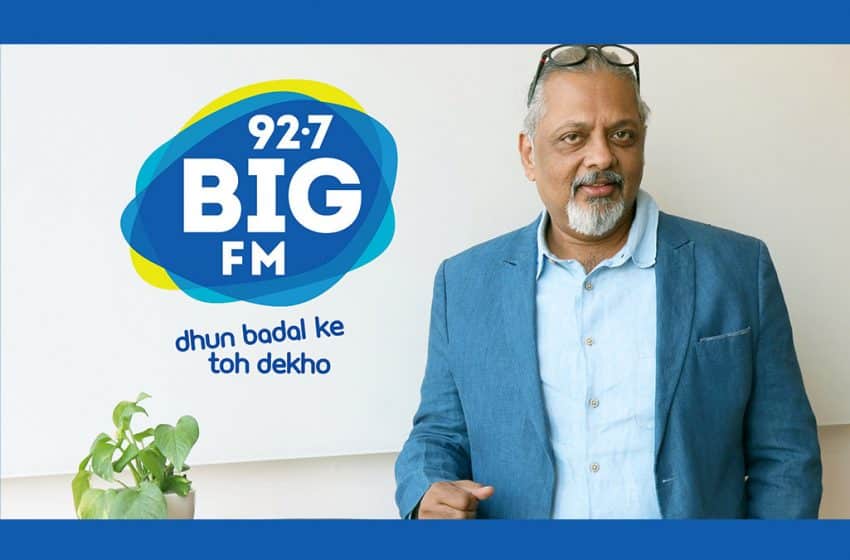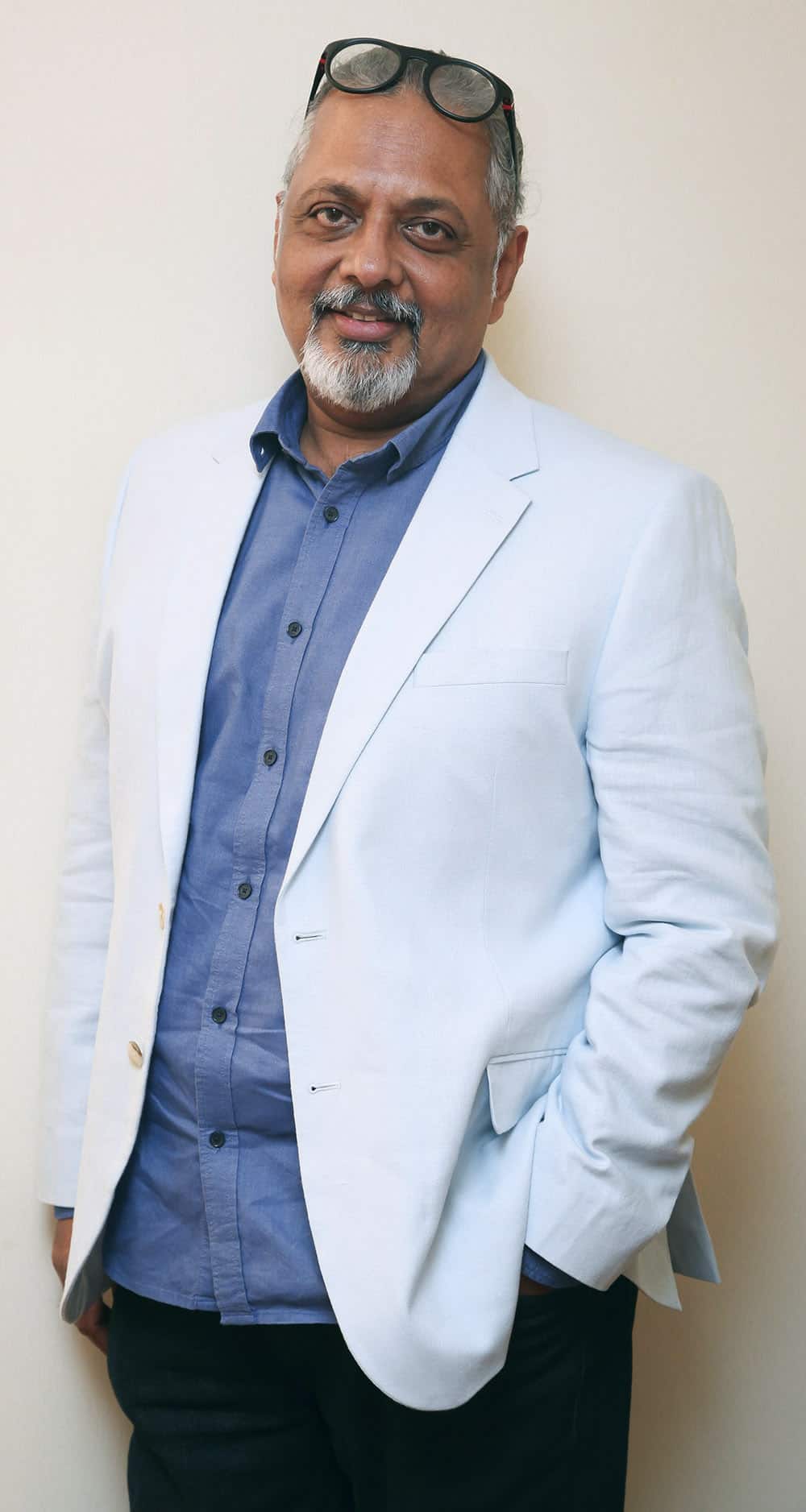
Abe Thomas is CEO of Reliance Broadcast Network Ltd., which owns BIG FM, one of India’s largest radio networks. He’s been in the media and entertainment landscape for more than 30 years and has worked with some of the most prominent brands and teams in the business, building and scaling large media businesses across TV, radio, digital and print in India, China and South Asia. In this exclusive RedTech interview, Thomas provides insight into the country’s audio landscape and explains how he is driving the evolution of the 58-station network into a holistic audio entertainment company.
RedTech: Would you characterize the Indian radio market as very competitive — how many stations or groups are there and how are you differentiating yourself to attract share of audience?
Abe Thomas: In today’s multimedia, non-linear world, content companies are competing for the share of time of the consumers. Competition has expanded to include every activity that the consumer indulges in. For radio, as a companion and multitasking medium, it is imperative to reach audiences in key screenless moments in their day-to-day life, be it working, cooking, exercising or doing chores.
With regards to the radio industry, networks are keeping themselves differentiated through unique approaches in terms of positioning, music and content for their listeners. There are 1,097 operational radio stations in India. In 2021, there were 31 private FM broadcasters, across 111 cities, who operated 385 private FM radio stations (as per EY-FICCI Report 2021).
This is radio’s finest hour! We are witnessing a huge growth in all forms of audio consumption including live audio as well as on-demand audio services, such as streaming and podcasts.
BIG FM, operating across 58 different markets, has carved a niche for itself through its timeless music formats and thought-provoking content. Our vision is to “unlock everyday optimism” and be “thought inspirers” to all our stakeholders by giving them alternate perspectives to create a better world around us and give us a deeper purpose, making us the most favorite station in all markets for consumers and advertisers alike. At BIG FM, we have pioneered numerous audio formats like storytelling, purpose marketing, and have built strong IPs that trend across digital formats as well.
RedTech: What is happening to time spent listening in your market? If it’s declining, where are audiences spending more of their time and how are you re-engineering your radio stations to grow your share of TSL?
Thomas: The exponential boom in video content consumption is also driving an explosion in consumption of audio content. The recent times have seen the blue screen fatigue set in like never before, leading audiences to turn to audio extensively. This is radio’s finest hour! We are witnessing a huge growth in all forms of audio consumption including live audio (FM radio plus live web radio) as well as on-demand audio services, such as streaming and podcasts.
In the last couple of years, the time spent listening to radio has seen an upswing. With radio-plus-digital being the obvious progression, radio has evolved in the digital realm and expanded its multiple offerings as people can now listen to content through their smartphones, radio sets, laptops and other audio devices.
With the onset of lockdown, 82% of the population (22% increase compared to the pre-lockdown era) tuned in to FM radio. Further research shows that radio listenership increased by 23% during lockdown to 2.36 hours every day. (Source: AZ Research PPL). In January 2021, radio as a medium registered 4.6% growth in listenership compared to December 2020, according to RAM [Radio Audience Measurement].
RedTech: How has the health crisis impacted your operations? Has it sped up your transition to non-linear formats?
Thomas: The global health crisis was devastating — both at the business front as well as the personal front — for everyone across India, and the world, but it also led to some major learnings. It accelerated the adoption of technology, leading to cost- and time-efficiency, enabling the transition to new business models. At BIG FM, we were one of the first radio networks to move completely to a remote working model where all our 58 stations went live from homes. With the help of our disaster management team and their contingency plans, our operations functioned seamlessly from remote locations using our sound equipment and IT systems connected via VPN. We have moved to a smart working model, which is a hybrid between work from home and working out of office as per the demands of the work.
The pandemic also propelled our digital transformation, as we established ourselves as a holistic audio entertainment player. Last year, we made our foray into the web radio space with BRO — BIG Radio Online. Also, with social distancing being the need of the hour, we introduced Big Café Online, through which our listeners can enjoy a concert from the comforts of their homes.
RedTech: What role does technology and software play in your business either to help you grow, or to cut costs? If you had no budgetary constraints, what would you do at BIG FM to ensure a thriving future for the business?

Thomas: With the onset of the pandemic, radio gave us the power to showcase our true potential with its reach extending across the length and breadth of the country. Digital is now a way of life, and we at BIG FM look at this as a great opportunity.
Having built a robust content library, we feel that the opportunity is ripe to amplify our reach through a medium like podcasting, which is gaining immense popularity amongst the masses. We have made huge inroads in this space with many of our marquee properties being converted into podcast formats and made available across leading audio streaming platforms. Our emphasis is also at meeting our listeners where they are present through digital concerts, offline activations, live sessions, etc. Leveraging our expertise as an audio content creator, we want to connect with listeners through the fast growing space of smart speaker solutions and voice assistants. Using our power of influence and presenting a more immersive experience — chatbots, social commerce and gamification are other areas we would like to focus on.
RedTech: Online audio, both streaming and on-demand audio is booming. How is BIG FM sustaining its audience loyalty and advertising support?
Thomas: It’s important to note that in India live radio still commands the highest share of ear, and FM radio will continue to be the most listened-to medium. Owing to its ability to create intimate connections with the audience, it is driving the growth of audio from music to talk to podcasts to audio dramas and stories. Radio’s content has been well established and continues to grow in the podcast space on audio streaming platforms. Radio is live and local and allows multitasking, while music streaming and podcasts give you a more involving experience. Since the overlap between FM and digital audio is minimum, both will co-exist and complement each other.
Some of BIG FM’s key marquee properties are available on demand exclusively on Spotify. This has given us access to newer audiences and gives the podcast platform a wholesome suite of tried and tested content.
Also, adopting digitalization, we facilitated advertisers and entrepreneurs to book ads online through our distinctive self-service platform “BuyAdsOnBigFM.com” — a platform that helps advertisers make requests for jingles, strategize media plans, place orders and transact online without any distress. Considering the different requirements and target markets for the advertisers, it also offers customized packages and bookings accordingly.
RedTech: What is the attitude of advertisers in India to radio as a medium? How do advertisers know they are getting results with their radio advertising in India?
Thomas: We have been witnessing quarter-on-quarter growth from advertisers. Categories like services, banking/finance/investment, food and beverages, auto and retail are some of the top categories, with 69% of radio ad volumes being consumed by them. The game-changer for radio has been our regional and local brands.
Emerging markets — namely the tier 2 and 3 cities — are driving the growth in business. More brands are leveraging radio’s non-toxic, mass-local reach and influence in local markets nationally. Radio gets a higher share in these local spends.
In India, live radio still commands the highest share of ear, and FM radio will continue to be the most listened-to medium.
RedTech: Privacy matters in the digital environment, more than a decade ago. How is BIG FM responding to the scrutiny that media companies are under?
Thomas: While privacy is an extremely important matter, it is applicable more in the social media space where every move — from someone’s usage to their trends — are monitored. As a responsible radio platform, we adhere to the norms and guidelines shared by the government.
RedTech: What’s the future of podcasting in India and more largely in Asia?
Thomas: Podcast is the perfect form of content that is non-intrusive, easy to consume and a flexible medium of expression and storytelling, and our streaming numbers clearly point to its rising popularity. Today, India is the third largest market globally for podcasts, with 57.6 million monthly listeners. In the last year alone, a growth of 1100% was seen by Spotify on Hindi Podcasts. Furthermore, with high data and mobile penetration growth, this number can be expected to become three times higher in the next five years (per a recent PwC report). According to reports by MTV Mera Bharat Amazeballs Youth Study and MTV 50-City Podcast Survey, 46% of the urban youth listen to podcasts and 52% of youth from non-metros also listen to them.
Essentially, podcast players are realizing the promise of regional content in India — given the geography of the country. The next phase of user and engagement growth will come from these markets, and much like we’re seeing on terrestrial radio today, it will be the local advertisers and small brick and mortar outlets that will drive revenue growth due to the sheer volume of these long-tail advertisers.
RedTech: What other major trends are impacting the radio industry on a global level?
Thomas: Radio has created various touchpoints for its stakeholders to reach out to different sets of audiences, and given the credibility in voice that the medium pertains, brands are now coming back to radio, demanding more solutions across different channels including digital, podcasts, online events, etc. Processes are getting reengineered and moving from output to outcomes, collaborating with multiple partners.
With the shift in the consumer’s behavioral patterns, radio today is advancing into a myriad of avenues that are helping it to present an immersive experience for the listeners. This will enable the medium to foster a deeper level of engagement not only with its audience but also brand partners. We see this dominating the innovations and leading the trends.
These avenues will further help integrate radio into becoming a one-stop audio entertainment destination.





















